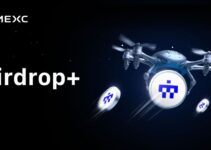
For the last decade, Artificial Intelligence and cryptocurrency have evolved in powerful, yet isolated silos. AI has been centralized, data-hungry, and lacking economic autonomy; a “brain in a jar.” Crypto has been decentralized, economically potent, and lacking intelligent automation; a “wallet with no brain.”
The convergence of these two technologies, DeFAI (Decentralized Finance + Artificial Intelligence), represents a new investment thesis. This is not merely another “AI token” narrative; it is the architectural merger that solves the primary limitation of both fields.
This merger is enabling a new “agentic economy”: an ecosystem where autonomous AI software agents, endowed with their own digital wallets, can act as independent economic participants. These agents will be able to own assets, execute smart contracts, and transact with each other to create novel value chains.
This article will analyze the core infrastructure of the agentic economy, examine the competing models of key players like Fetch.ai ($FET) and Coinbase, and define the tokenomic models that aim to capture this new, autonomous value flow.
1.DeFAI: The Architectural Necessity
To function, an AI agent requires two components that traditional finance and tech cannot provide:
A Sovereign Financial Rail: An agent cannot open a traditional bank account, sign a contract, or pass a human-based KYC check. It requires a 24/7, permissionless, and programmable financial system to hold and transfer value.
A Trustless Execution Layer: For agents to transact with each other, they need a neutral, non-corruptible environment to enforce agreements.
The blockchain, by its very nature, provides both. Cryptocurrencies (like stablecoins or native tokens) serve as the agent’s “money,” and smart contracts serve as its “binding legal agreements.” This is the foundational premise of DeFAI.
2.The Agentic Economy: A New Economic Layer
The “agentic economy” is the marketplace that emerges from these new capabilities. This is not about human-centric applications like better trading bots. It is about a new, machine-to-machine (M2M) economy.
Consider a simple supply chain: a human must currently negotiate with a supplier, book a shipping firm, track the cargo, and pay an invoice.
In the agentic economy, a “logistics agent” on the blockchain autonomously discovers a “shipping agent.” They negotiate a price for transport via a smart contract. The logistics agent locks the payment in escrow, and the shipping agent’s IoT sensor (another agent) automatically confirms delivery, which instantly releases the payment.
In this M2M economy, billions of micro-transactions occur every second, creating a massive, high-frequency demand for on-chain value transfer. The core investment question is: which platforms are being built to handle this flow, and how will their tokens capture its value?
We are seeing two dominant models emerge: the decentralized protocol and the centralized on-ramp.
3.Case Study 1: Fetch.ai ($FET) – The Decentralized Protocol

Fetch.ai is a Layer 1 blockchain built as a foundational, decentralized “operating system” for AI agents. Its thesis is that agents, like people, need a permissionless world to live, discover, and interact.
The Infrastructure:
The Fetch.ai ecosystem provides the core tools for an agentic economy:
- The Agent Framework: Tools for developers to build and deploy autonomous agents.
- The Agentverse: A “directory” or “search engine” where agents can find each other based on the services they offer (e.g., “data analysis,” “weather forecasting,” “ride-sharing”).
- The Fetch Blockchain: The high-throughput, low-cost settlement layer where agent-to-agent transactions are finalized.
Tokenomic Model ($FET):
The $FET token is not just a speculative asset; it is the native economic unit for this digital nation. Its utility is deeply integrated into the system:
- Medium of Exchange: $FET is the primary currency agents use to pay each other for services. In our logistics example, the payment from one agent to another would be in $FET.
- Network Registration (Staking): To be “discoverable” in the Agentverse, an agent must stake (lock up) $FET tokens. This acts as a security deposit, proving the agent has “skin in the game” and disincentivizing spam.
- Network Fees (Gas): All agent operations from sending a message to registering a service or executing a smart contract require a small network fee paid in $FET.
The investment thesis for $FET is straightforward: the value of the token is directly proportional to the economic activity of the entire agent network. More agents + more transactions = higher velocity and demand for $FET.
4.Case Study 2: Coinbase’s “Based Agent” – The Centralized On-Ramp
Coinbase is pursuing a different, top-down strategy. Instead of building a new, decentralized world, it is building a “bridge” to connect the current, centralized AI world (dominated by OpenAI, Anthropic, etc.) to the on-chain economy.
The Infrastructure:
Coinbase’s “Based Agent” project provides developer tools (like AgentKit) to securely connect a powerful Large Language Model (LLM) to a crypto wallet on its Layer 2 network, Base.
The Strategy: Mass Adoption via Abstraction
Coinbase is betting that the next million DeFAI users won’t be crypto-native. They will be traditional developers and users who want to leverage AI in a simple way. “Based Agent” allows a developer to write a simple English prompt that the AI agent can execute as an on-chain transaction.
Prompt: “Build an agent that monitors this wallet and automatically mints any new NFT from [X] collection, using a budget of 1 ETH.”
Prompt: “Create a bot that executes a rebalancing trade between ETH and BTC on a DEX whenever their ratio moves 5%.”
This strategy abstracts away the complexity of crypto. The user interacts with an AI, and the AI interacts with the blockchain. The economic activity is captured by Coinbase’s network (Base), driving transaction fees (paid in ETH) and solidifying its role as the primary “on-ramp” for this new economy.
5.Competing Models and Market Future
We are witnessing a classic technology adoption battle:
- Fetch.ai ($FET) represents the “Linux” model: a decentralized, open-source, and sovereign ecosystem. Its success depends on attracting a critical mass of native developers and agents to its platform, creating a network effect that is difficult to replicate.
- Coinbase represents the “Apple” model: a centralized, curated, and user-friendly ecosystem. Its success depends on leveraging its massive user base and developer relationships to become the de facto standard for on-chain AI, even if it sacrifices true decentralization.
For a professional investor, the DeFAI thesis is not an “either/or” bet. Both models will likely co-exist. The trillion-dollar question is not if the agentic economy will be built, but where the majority of its value will be settled.
Decentralized protocols like Fetch.ai offer direct exposure to the utility of a native M2M economy, while centralized platforms like Coinbase offer a lower-risk, infrastructure-and-fee-based play on mass adoption. The prudent approach is to monitor the key metrics for both: the growth of active agents on Fetch.ai versus the transactional volume driven by AI agents on Base.
Disclaimer: This content is for educational and reference purposes only and does not constitute investment advice. Digital asset investments carry high risk. Please evaluate carefully and assume full responsibility for your own decisions.
Join MEXC and Get up to $10,000 Bonus!



